John Fleming, MD is deputy assistant for health technology reform for the Office of the National Coordinator. He served in the US House of Representatives (R-LA) from 2009 until 2017.

Describe your role within the Office of the National Coordinator.
I’m a board-certified family physician. I practiced for a number of years, going back to 1979 when I completed my family practice residency. I did six years of service in the Navy and then went into private practice in Minden, Louisiana. I ran for Congress in 2008 and served from 2009 through last year. I was appointed to this position, deputy assistant secretary of health IT reform, in March. I’ve been serving here ever since.
We have two major areas that we are working on going forward. One is interoperability. Genevieve Morris is the lead on that and that’s her specialty area. Mine is in physician burden, administrative burden, and provider burden in general. But particularly physician burden is critical and crucial at this point. Of course I work with the interoperability issues as well, but my major emphasis is on physician burden.
We’ve been doing a lot of stakeholder input. We’re continuing that process. Then, we’re going to begin working on deregulatory actions as well as fulfilling a requirement in the 21st Century Cures Act that we report to Congress or the Secretary or both. We’re still trying to elucidate that issue on the current state of things, which incidentally is not good on physician administrative burden, and recommendations on how we can move forward on that.
How do you see ONC’s role, especially since some of the burdens of documentation were imposed by the federal government and systems vendors design their products both around those requirements and what they believe the market has demanded?
In the mind of most providers out there, the burden is in some way connected to, if not caused by, the electronic health record. But the plain truth is that the electronic health record is not the fundamental cause of administrative burden. But it does, I think, worsen it to some extent, and it has not yet been capable of fixing some of the problems with administrative burden that you might expect a computer to do.
I think it makes sense that ONC is involved. In the 21st Century Cures Act, it calls out for collaboration between ONC and CMS, because CMS is a major payer for healthcare across the nation. I’ve heard estimates that as much as 40 percent of healthcare is paid for through CMS, mainly through Medicare and Medicaid. It calls out a collaboration between ONC and CMS to do these things.
We have four work groups that are currently working in collaboration between the two agencies on the various aspects. Yes, the electronic health record does have its issues in terms of usability. The interface, we certainly think, needs improvement. But to be honest with you, it is not the fundamental problem. The fundamental problem with physician administrative burden has been an accumulation of regulations, requirements, and restrictions going back over three decades. To solve the problem, we need a combination of regulatory reform as well as improvement and enhancement of the EHR interface.
Do you see the burden of documentation that was introduced as an improvement framework within Meaningful Use unwinding, or will it just be changed to reflect contemporary practice?
I don’t think it’s going to change on its own. If left untouched, it’s going to continue. In fact, it’s actually going to get worse, because in the 2016 MACRA bill, there is brought forward the quality measures and quality reporting into the electronic health record space. Those requirements actually started up maybe six or eight years before, but they were streamlined and brought up to date into the MACRA bill and set up for implementation.
As of last year, we began to see the implementation of quality reporting, and then payments are going to be adjusted based on scores. But the problem is, how do you work that into the electronic health record workflow without causing additional administrative burdens? The truth of the matter is it’s quite a challenge and there’s a lot written about it. MedPAC has made some very interesting comments about it as well. I would say to you that in the current trend line, it’s going to get worse before it gets better, which is all the more reason why we need to begin addressing these things.
One thing that you mentioned — I would like to adjust back on the facts a little bit. The documentation guidelines that I think are a big source of the physician administrative burdens actually began in 1995 in the pre-EHR period. The electronic health record in some ways has made that worse as an unintended consequence. In 1995, the rules and regulations came out and they were somewhat changed or added to in 1997, so there are two sets of guidelines and physicians can use either one of them. Evaluation and management codes – which are what most non-surgeons use, a set of codes as far as what level of service was provided — determine the pay to that physician. The level of payment is determined by how much documentation is provided in that visit. The point is, the more you document, the more you’re paid.
That doesn’t necessarily mean that doctors are being paid more for better service, longer time spent with patients, or even better care. Simply, the more they document about what they did, the more they’re paid. The problem that we see in the electronic health record era is that now these systems are often designed where you can click boxes and dump a lot of data or text into the progress note, much of it normal description, which then creates a huge document that becomes virtually unreadable and actually camouflages important findings. We call that note bloat.
As a result of the documentation guidelines in 1995 and 1997, which at that time required either dictation or handwriting, then you fast-forward into the higher adoption rates we have today, which are about 85 percent for ambulatory care, 97 percent for hospitals. Instead of improving that, the unintended consequence is that the way systems are designed, it creates larger and more unreadable notes. That has become quite a pain point for providers to the point that oftentimes a doctor simply refuses to read progress notes that other physicians created because they simply don’t have the time to dedicate to reading what is a lot of normal text. Often it’s a syntax that’s very hard to follow because it’s a cut-and-paste kind of creation.
Hopefully that gives you a little better idea of what seems to be the most crucial pain point. There are others, but that seems to be the one that you hear the most from physicians.
How do you see the recommendations of those committees being operationalized?
The documentation guidelines evaluate a progress note in terms of how the physician is paid based on three areas — the complexity of the history, the physical exam, and then the decision-making process. It’s very specific and arbitrary about how many systems are examined and discussed, how many tests are ordered, and that sort of thing.
The stakeholder input that we get — and a lot of discussions that we have internally from those like myself who’ve practiced medicine for a number of years — is that that needs to be reformed and streamlined. Just a couple of example ideas that we’re hearing. One is to do away with the requirements on the physical exam and the history and simply base that on the complexity of the decision-making. That can be somewhat arbitrary, too. How do you really score that? How do you determine what’s complex and what isn’t? For instance, you may have one person with a serious disease that requires a lot of discussion and decision-making, or you may have somebody with five different simple problems. Which is considered more complex? That’s a matter of debate.
Another option that’s been discussed — and again, no decisions have been made whatsoever — would be to simply pay the physician a blended rate for the encounter and assume that some encounters are going to be more complex than others, but that by doing away with the extensive amount of unnecessary documentation that’s more red tape than anything, that the physician would have more time to spend with the patient and provide better quality care.
That’s just some of the discussion. We’re not even close to making a decision on that.
You said once that you would like everyone in America have a single, cloud-based health record under their control. Is that possible, and what would it take to make it a reality?
It is possible. There are some barriers. There are some challenges before us, but they’re technical and they can be overcome. For instance, how do you get that information to that location? That’s where we’re working on interoperability. Genevieve Morris is working on the TEFCA program – Trusted Exchange Framework and Common Agreement. We’ll have regulations that come out that are compliant with HIPAA, which will promote and implement some standards and also enforcement such that providers will be better able to share information with permission of the patients.
As we do that, there are companies out there already that have data banks, or patient record banks. They’re already accumulating those to some extent. It’ll simply be a matter of how they collect these from various providers, how they organize these records, and how they put them under the control of patients. That’s where the discussion about APIs comes in, which we talk a lot about here. Then, how do they give permission to other providers to access those records and at what security levels?
This is all coming together pretty rapidly, although we don’t have a specific goal here at ONC to create a patient-centered record. Both patients and professionals alike have a huge stake in this outcome. We’re facilitating the intermediate process of sharing that information, making sure the data is readable and transferrable so that ultimately it can be put into one single location.
That’s not to say that providers wouldn’t also have a version of records as well, but there would be a stockpile, or a single location that a patient could point someone to so that all care can be accessed to the extent that the patient gives permission. For instance, if you’re traveling in another state or another location and you have an acute illness, you could simply give a temporary password or code and that physician could access all of your records that have accumulated from a number of providers over a span of time.
How much is the lack of interoperability due to technology rather than the business problem of providers not necessarily wanting to share information?
It’s totally a mixed bag. Both of those are factors. I don’t think I have enough information to decide which is worse or which is the bigger problem. They’re both big problems.
I think that the policy side of it and the business model side is a lot easier to fix than the technical side, because what you’re looking at is all sorts of syntax issues. For instance, some programs may be set up to measure weight in kilograms, some in pounds, some may write out “pounds” and others might use a symbol instead. All of these things have to be unified in a way that when you send that information, it means what it’s supposed to mean when it gets to the other end.
There’s a huge complexity to all of those issues. We’re trying to bring everyone to a consensus on how that information is reported and what format we use, such as the FHIR standards, which seems to be the way most people are going nowadays. The standardization is something that we’re working on so that it’s easier to move that along.
The other part of it is, how do you build the highways out there for that information to flow? Then more importantly is the on-ramp to that information highway. Let’s say a solo physician wants to be interoperable with a local hospital, maybe other medical clinics, ambulatory centers, or other physicians. They may have to sign a number of different contracts in order to be able to do that with different standards, different requirements. Some may cost money in order to build APIs, an interface where one program can share information with another.
What Genevieve is working on is on-ramps where a given provider could — either through the vendor or through a local information exchange organization — get on that information highway with one login that’s sustainable. They can go wherever they need to go to get their information, whether it’s a one on or whether it’s a bulk download or upload.
All of that’s in the works. We’re trying to be not overly prescriptive about it because we want to be sure innovation continues. Sometimes too much regulation can hold that back.
But there’s also is the business model, the business case. Currently, or certainly in the past, there are vendors out there who felt it was in their best business interest not to share information or the capability of sharing information except within their own system. That gives them, in their view, some advantage in order to sell their system and its capabilities.
But I think with the evolving regulation requirements — and certainly the very stiff penalties against those who don’t create the capabilities to share information — there’s going to be a totally different business case out there that will be in the best interest of all vendors. That is to say, if you’re not able to communicate with all of the systems available out there through the pathways given, then you’re not going to have a sustainable business. I think that’s going to change rapidly over the next year or two.
How has ONC’s mission and operation changed with the leadership changes in HHS and the White House?
I can only speak for leadership as of this current administration since I really had no interaction with ONC prior to that time. The changes in leadership that we’ve had have really had no impact. Certainly the three political appointees in our agency are the same from Day One and our mission has been the same. We haven’t missed a step. We may report to a different person from time to time than we did before, but nothing’s changed about our activities or was really impacted whatsoever from the change of leadership, certainly at the Secretary level.
As a former number of Congress and a physician, what are the most significant opportunities to improve American health?
First of all, that we put patients or consumers back in the driver’s seat so that they can make decisions about their own healthcare and their healthcare coverage. Where we come in is the liquidity of data, so that information can go where it’s supposed to go and certainly for the benefit of the patient or the consumer. The reason I say “consumer” sometimes instead of “patient” is that a lot of times people want to maintain good health rather than getting well from ill health. It’s important to think of everyone in America as having the need for data liquidity for their health, even if they’re fully healthy.
We’ve been through quite a cycle of healthcare reform, which I think continues to evolve. Whether you are very much in favor of government being in control of the healthcare system or whether you believe that the free market should be in control, I think we all agree that better access to care and lower cost and higher quality care should be the goal. That is really the goal ahead of us. We’re trying to create that data liquidity in order to help patients and professionals to delivery higher quality and lower cost.
Then on the physician burden side, if you look at it from a macroeconomic standpoint, there’s a lot written about the fact that physicians spend at least half their time and perhaps more — and we think that this is happening with nurses and other healthcare professions as well — on administrative duties. They’re spending half of their professional activity functioning below their license. What we really have is a pent-up productivity in America.
Think about the physician shortage that we have across America, particularly in primary care. If we were to unleash doctors, if they were practicing up to their full license status — that is, functioning as healthcare providers at least 90 percent of the time, much less 100 percent of the time — just think how much more care and how much time they could spend with patients, how much better quality of care would be, and how much lower the cost would be.
That’s the ultimate goal I have in the physician administrative burden space — to unleash, unlock that pent-up lack of productivity that has been created over three decades of regulations on top of regulations. I’ve only named two or three. There’s quite a number of them that sometime I’ll be happy to go through it with you to show you just how much has been done in the regulatory space over the many years that has created what is, at this point, a critical juncture in this time of healthcare such that doctors, at the highest rate ever, are having burnout or retiring early, going into other professions, and certainly not practicing to their ultimate capabilities. That’s what I hope to achieve on the productivity side of things.
Do you have any final thoughts?
Other than the ongoing regulatory responsibility that we have at ONC — which is the follow-through on Meaningful Use, which is now wrapped into MIPS, which is part of the quality measurement and quality reporting space going forward and through statute — what we are dedicated to do here in addition to supporting HHS in all of its goals and missions is to create data liquidity, lowering healthcare cost and increasing quality by way of improved interoperability and the end of information blocking. Then also to unleash physician productivity, which is at an all-time low. That is, in a nutshell, what we’re all about here at ONC.




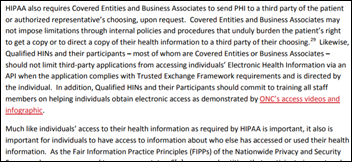
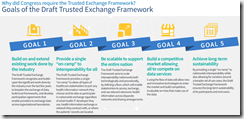





























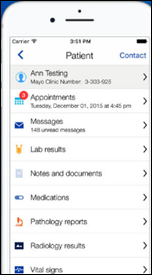




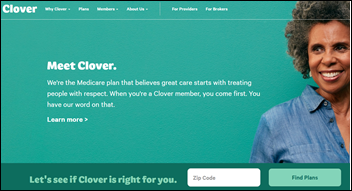











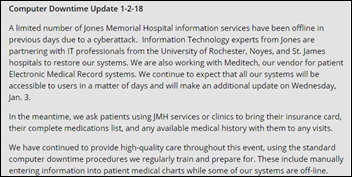










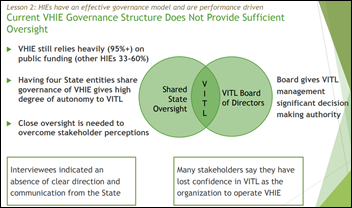
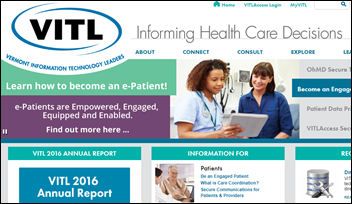


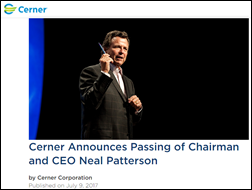


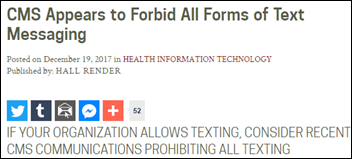

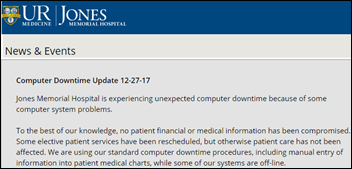


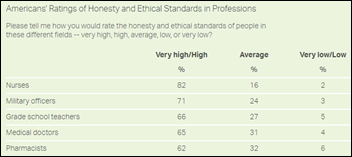
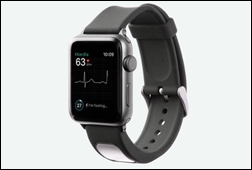
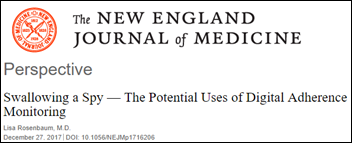
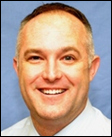


















































































Would have liked to have seen more about Expanse here. Would like to see more about it on this site…